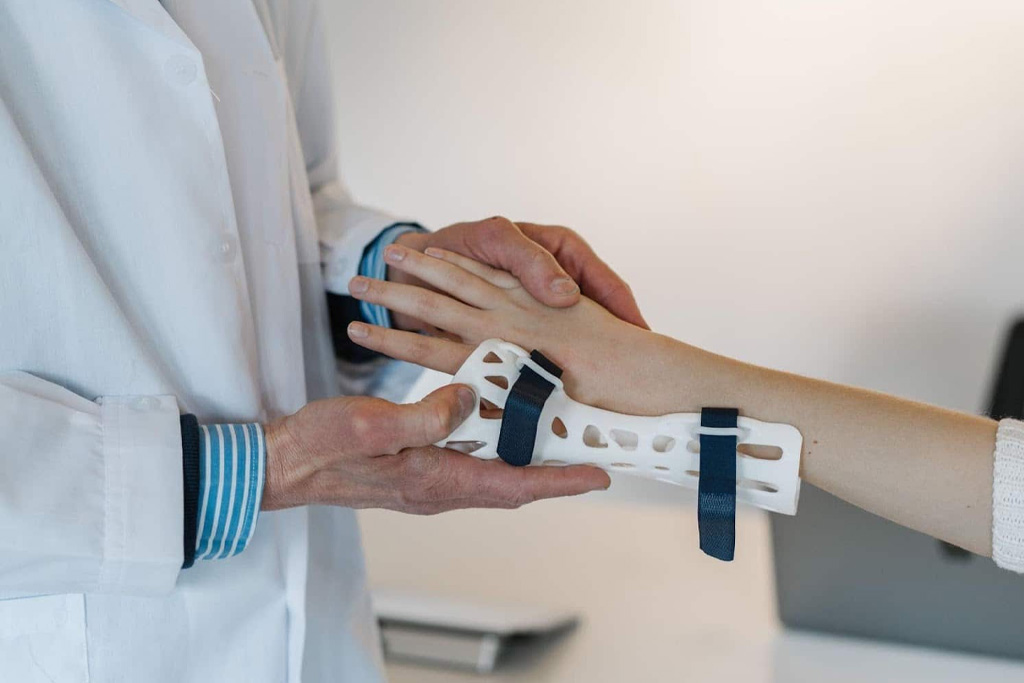
Orthopedic technology is evolving rapidly, enhancing the diagnosis, treatment, and recovery processes for patients with musculoskeletal conditions. Here are eight of the latest trends shaping the field of orthopedic technology:

1. Robotic-Assisted Surgery:
Robotic systems are becoming increasingly popular in orthopedic surgery. These systems assist surgeons in achieving unparalleled precision and accuracy during procedures, resulting in better outcomes and faster recoveries for patients.
2. 3D Printing for Custom Implants:
3D printing technology allows for the creation of custom orthopedic implants tailored to a patient’s specific anatomy. This innovation improves implant compatibility and reduces the risk of complications.
3. Wearable Devices and Remote Monitoring:
Wearable technology, such as smart braces and activity trackers, helps patients monitor their progress and adherence to rehabilitation exercises. Healthcare providers can remotely track patient data, enabling proactive intervention when necessary.
4. Minimally Invasive Techniques:
Minimally invasive orthopedic procedures continue to gain momentum. Smaller incisions, reduced tissue damage, and quicker recovery times make these techniques preferable for both patients and surgeons.
5. Biologics and Regenerative Medicine:
Orthopedic specialists are increasingly using biologic treatments, such as stem cell therapy and platelet-rich plasma (PRP), to promote tissue repair and regeneration. These approaches can accelerate healing and reduce the need for invasive surgery.
6. Augmented Reality (AR) for Surgical Planning:
AR technology aids surgeons in the planning of complex orthopedic procedures. It provides detailed 3D anatomical maps, allowing for precise preoperative planning and intraoperative guidance.
7. Telemedicine for Orthopedic Consultations:
Telemedicine is making orthopedic consultations more accessible. Patients can seek expert opinions and follow-up care remotely, reducing travel and wait times.
8. Artificial Intelligence (AI) for Diagnostics:
AI-driven diagnostic tools are improving the accuracy and speed of musculoskeletal condition identification. These systems analyze medical images and patient data, aiding in early detection and personalized treatment plans.
As orthopedic technology continues to advance, patients can expect better outcomes, reduced pain, and shorter recovery times. Orthopedic surgeons benefit from enhanced tools for precision, and the overall quality of care is on the rise. These trends are shaping the future of orthopedic medicine, promising a brighter and more efficient path to musculoskeletal health.
FAQ's
Orthopedic technology is a field of healthcare that focuses on designing, creating, and fitting orthopedic devices such as braces, artificial limbs, and prosthetics to help individuals with musculoskeletal injuries or conditions.
Orthopedic technology can help with a wide range of conditions and injuries, including osteoarthritis, fractures, sprains, scoliosis, amputations, and spinal cord injuries.
Some common orthopedic devices include knee braces, ankle braces, wrist braces, back braces, artificial limbs, and prosthetics.
Anyone with a musculoskeletal injury or condition, from children to older adults, can benefit from orthopedic technology. It can also benefit athletes who want to prevent or recover from injuries.
Orthopedic devices are custom-made for each individual based on their specific needs and measurements. They are typically made from materials such as plastic, metal, or carbon fiber.
